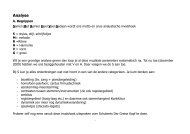Anton Webern and the influence of Heinrich Isaac
Anton Webern and the influence of Heinrich Isaac
Anton Webern and the influence of Heinrich Isaac
Create successful ePaper yourself
Turn your PDF publications into a flip-book with our unique Google optimized e-Paper software.
Had <strong>Isaac</strong> not harmonised <strong>the</strong> cadence, bar 9 would also fit <strong>the</strong> symmetrical structure,<br />
reading instead ‘tenor solo/altus rest’; yet <strong>Isaac</strong>, like <strong>Webern</strong> was concerned more for<br />
<strong>the</strong> musical result than <strong>the</strong> blind pursuit <strong>of</strong> strict technique. To comment<br />
anachronistically, <strong>the</strong> refinement <strong>of</strong> this example is almost reminiscent, in its sparse<br />
texture <strong>of</strong> <strong>the</strong> <strong>the</strong>me from movement II <strong>of</strong> <strong>Webern</strong>’s Symphony. It seems clear that<br />
<strong>Webern</strong>’s penchant for symmetrical structures <strong>and</strong> palindromes, manifest in <strong>the</strong><br />
Symphony, are based in his study <strong>of</strong> <strong>Isaac</strong>.<br />
After <strong>the</strong> Symphony <strong>Webern</strong>’s canonic technique underwent a gradual process<br />
<strong>of</strong> abstraction, to <strong>the</strong> point where <strong>the</strong> canonic origins <strong>of</strong> some <strong>of</strong> <strong>the</strong> later works are<br />
entirely imperceptible. With this abstraction it becomes increasingly difficult to relate<br />
<strong>Webern</strong>’s work to procedures that he would have encountered in <strong>the</strong> music <strong>of</strong> <strong>Isaac</strong>.<br />
However, <strong>the</strong>re is a paradoxical sense in which, while superficially moving away<br />
from <strong>the</strong> Ne<strong>the</strong>rl<strong>and</strong>ish practices, on a deeper level <strong>Webern</strong> was moving closer to <strong>the</strong><br />
spirit <strong>of</strong> <strong>the</strong> Ne<strong>the</strong>rl<strong>and</strong>ers. That is to say, <strong>the</strong> underlying principles, ra<strong>the</strong>r than <strong>the</strong><br />
surface techniques seem to become more important to <strong>Webern</strong>, as does an attitude <strong>of</strong><br />
advancing compositional technique (from a basis firmly rooted in tradition); surely a<br />
concern also <strong>of</strong> <strong>the</strong> likes <strong>of</strong> <strong>Heinrich</strong> <strong>Isaac</strong>.<br />
In particular <strong>the</strong> idea ‘as old as <strong>the</strong> art <strong>of</strong> counterpoint itself’ <strong>of</strong> producing<br />
‘multiplicity out <strong>of</strong> unity’ (Smith, 1967: 87) remains a primary concern <strong>of</strong> <strong>Webern</strong>’s<br />
even when <strong>the</strong> details <strong>of</strong> his approach changes. The change in canonic approach<br />
between <strong>the</strong> two Cantatas Opp. 29 <strong>and</strong> 31 illustrates this. While in Op. 29 <strong>the</strong><br />
alteration <strong>of</strong> <strong>the</strong> original canonic structure took <strong>the</strong> ‘form <strong>of</strong> simple rhythmic<br />
distortions, <strong>the</strong> voices <strong>of</strong> Op. 31 are subjected to combinations <strong>of</strong> verticalization,<br />
value replacement, augmentation <strong>and</strong> retrograde, in some cases in such a way as to<br />
obscure completely <strong>the</strong>ir common rhythmic basis’ (Bailey, 1991: 119). Yet, through<br />
14


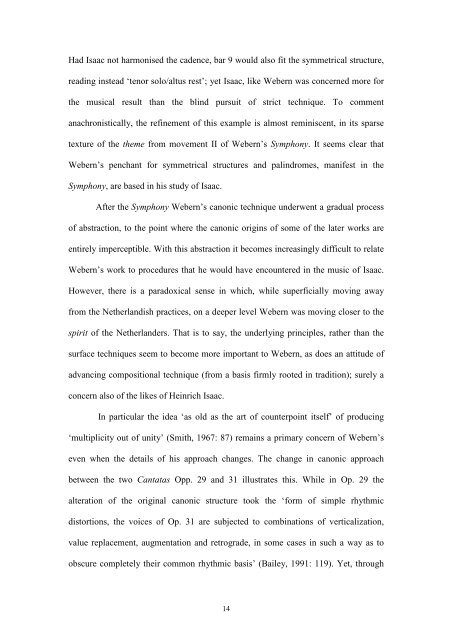
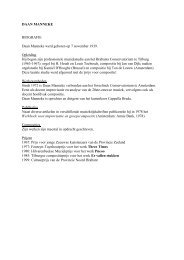
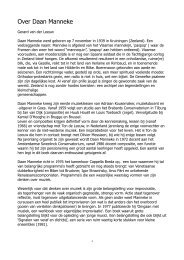
![Schubert, Winterreise: Einsamkeit [PDF] - bestmusicteacher.com](https://img.yumpu.com/21166489/1/190x135/schubert-winterreise-einsamkeit-pdf-bestmusicteachercom.jpg?quality=85)
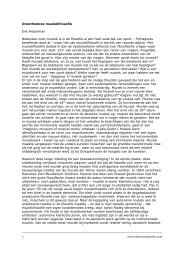
![Schubert, Winterreise: Die Nebensonnen [PDF] - Bestmusicteacher ...](https://img.yumpu.com/20295219/1/190x135/schubert-winterreise-die-nebensonnen-pdf-bestmusicteacher-.jpg?quality=85)
